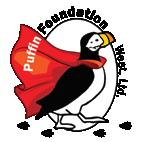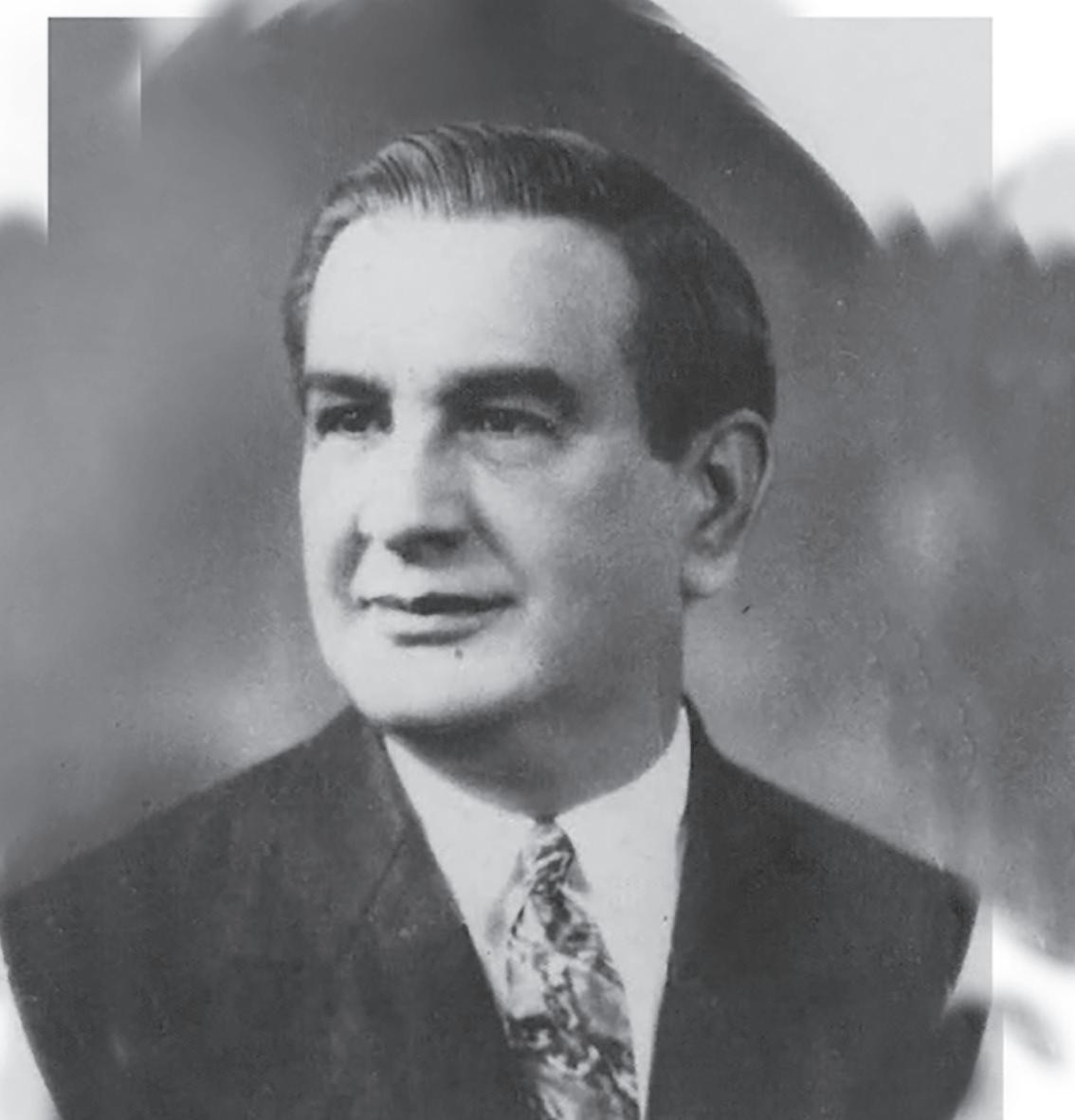w H At makEs
Made possible by

STUDENT HANDBOOK 2O23/24
CARLOS MIGUEL PRIETO MUSIC DIRECTOR
NORTH CAROLINA SYMPHONY EDUCATION SUPPORTERS
These concerts are made possible by a generous grant-in-aid from the State of North Carolina; the Honorable Roy Cooper, Governor; and D. Reid Wilson, Secretary, North Carolina Department of Natural and Cultural Resources. NCS also gratefully acknowledges the following supporters:

EDUCATION SUSTAINERS
EDUCATION BENEFACTORS
Anonymous, Anonymous Trust / Simple Gifts Fund, The Bastian Family Charitable Foundation, The Mildred Sheffield Wells Charitable Trust
EDUCATION PATRONS
The Backyard Foundation, Robert P. Holding Foundation, Inc., Samuel P. Mandell Foundation, James J. and Mamie R. Perkins Memorial Fund, Youths’ Friends Association Inc.
EDUCATION PARTNERS
Mark and Gayle Acuff
Anonymous
Anonymous Fund
Avidex
Bailey Endowment, Inc.
The Harold H. Bate Foundation
Bell Family Foundation
Bertsch Family Charitable Foundation, Inc.
BlueCross BlueShield of North Carolina

The Borden Fund, Inc.
R.A. Bryan Foundation, Inc.
Mary Grey Burney Foundation
The DeLeon Carter Foundation
Carteret Community Foundation
celito
The Cole Foundation
Mr. and Mrs. Jeffrey A. Corbett
Craven County Community Foundation
Curi
Edna Williams Curl and Myron R. Curl Charitable Fund
Deloitte
Dr. Albert Joseph Diab Foundation
The Dickson Foundation, Inc.
Dover Foundation, Inc.
Drucker + Falk
William C. Ethridge Foundation, Inc.

The Lundy Fetterman Family Foundation Trust
First Citizens Bank
Fox Rothschild LLP
George Foundation, Inc.
GFL Environmental
Gipson Family Foundation
Granville County Community Foundation
Gregory Poole Equipment
The Hellendall Family Foundation of North Carolina
Hopper Piano and Organ Co.
Iredell County Community Foundation
Harry and Virginia Killian Charitable Endowment
Kiwanis Club of Raleigh
Sandi Macdonald & Henry Grzes
Dawn & Gregg MacLaren
Dr. Neil McLeod
MGN Family Foundation
NACEO: National Association of Chief Executive Officers
New Hanover County Government
North Carolina Symphony Boards of Trustees
Onslow Caring Communities Foundation
Onslow County Government
Outer Banks Community Foundation
Paradox Consulting Partners

Poole Family Foundation

W. Trent Ragland, Jr. Foundation
Raleigh Fine Arts Society, Inc.
Rete Mirable Fund
Florence Rogers Charitable Trust
E.T. Rollins, Jr., and Frances P. Rollins Foundation
Mrs. Frances P. Rollins
RSM US LLP
The Norman and Rose S. Shamberg Foundation
Mr. and Mrs. Henry L. Smith
Smith Anderson
The Eddie and Jo Allison Smith Family Foundation, Inc.
The Sorin Group
Southern Bank Foundation
Swearingen Foundation
TCHROA: Triangle Chief Human Resources Officers Association
The Titmus Foundation
Towne Insurance
UNC Health
VACO
Vance County Community Foundation
Wells Fargo
Alex and Barbara Wilson Charitable Foundation, Inc.
Margaret C. Woodson Foundation
Mrs. Darliene Woolner
MUSIC EDUCATION ENDOWMENT FUNDS
The Joseph C. and Diane E. Bastian Fund for Music Education
The Ruby and Raymond A. Bryan Foundation Fund
The Mary Whiting Ewing Charitable Foundation Fund
The Hulka Fund for Chamber Music
The Janirve Foundation Fund
The Elaine Tayloe Kirkland Fund
The Ina Mae and Rex G. Powell Wake County Music Education Fund

The Jennie H. Wallace Music Educator Award Fund
SCHOOL SYSTEM SUPPORTERS
Chapel Hill-Carrboro City Schools
Cumberland County Schools
Durham Public Schools
Edgecombe County Public Schools
Harnett County Schools
Johnston County Public Schools
Lee County Schools
New Hanover County Schools
Orange County Schools
Wake County Public School System
Supporters are current as of August 2023
f UN fACt S
• Saint-Saëns loved animals, and even wrote a famous piece of music called The Carnival of the Animals.
• He studied astronomy, archaeology, geology, and lepidopterology (the study of butterflsies and moths)—and was also a master mathematician.
• By the age of three, he could read, write, and play piano.
Camille
SAiNtS Aëns
BORN: October 9, 1835, Paris, France
DIED: December 16, 1921, Algiers (El Djazair), Algeria
BIOG rA p HY
Charles-Camille Saint-Saëns was a great composer, organist, conductor, and pianist of the Romantic era. He was introduced to the piano by his mother and great aunt, who recognized his musical curiosity and potential from a very young age. It became clear that he was a child prodigy when he completed his first work of music at the age of four—and he played his first concert when he was 10 years old!

FEATURED WORK
Bacchanale from Samson and Delilah
To make money early in his career, Saint-Saëns played the organ in churches around Paris. He also taught at the Paris Conservatory, where his colleagues showed distress at his modern ideas about music. He also wrote books on acoustics and philosophy—plus a book of poetry and a successful play. He was a member of the Astronomical Society of France, owned a telescope made to his own specifications, and sometimes even planned concerts around astronomical events such as solar eclipses.
3
Listen to all the different instruments! IN
RODUCt
t
ION
mf
mp pianoforte pp
The softness or loudness of the sound
DYNAMICS
FEATURED WORK
Overture to The Magic Flute

Wolfgang Amadeus
M ozaRt
BORN: January 27, 1756, Salzburg, Austria
DIED: December 5, 1791, Vienna, Austria
BIOG rA p HY
Wolfgang Amadeus Mozart showed promise at an early age. Watching his older sister practice the piano helped shape his understanding of musical concepts. It wasn’t long before his father, an accomplished composer and musician, began tutoring him to advance his playing. At just six years old, he and his sister started performing for audiences. The stress of touring led to frequent health issues within the family and made for a difficult childhood. These obstacles didn’t stop him from carrying on as a composer and a performer.
f UN fACt S
• He loved animals and had many different pets, including a horse, a dog, and two songbirds: a starling and a canary.
• He was disorganized and would refuse to organize his music. Decades after Mozart died, Ludwig Ritter von Köchel catalogued everything and revealed how much music Mozart had written.
• He spoke 15 languages! Travelling the world as a musician helped him pick up languages from every stop he made.
As he got older, Mozart eventually arrived in Vienna where he wrote music, taught lessons, and performed in various venues. His life wasn’t long, but he performed often and collaborated with other composers to create timeless art. He continued to write operas, string quartets, symphonies, and more until the end of his life, becoming one of the most well-known composers in history.

iano 5
Amy
B eAcH
BORN: September 5,
1867, Henniker, New Hampshire
DIED: December 21, 1944, New York, New York
BIOG rA p HY
Amy Marcy Cheney began formal piano lessons at the age of six and soon gave public recitals of the works by Beethoven and Chopin. She also performed her own pieces. In 1875, her family moved near Boston, and she was advised to enroll in a European conservatory—but she declined and studied piano privately, even translating essays on orchestration from French for herself. She performed as a pianist with notable orchestras including the Boston Symphony Orchestra and the Handel and Haydn Society.

In 1885, at the age of 18, she married Henry Harris Aubrey Beach, a Boston surgeon who was 24 years older than her. She was not allowed to tutor; she limited her recitals to two per year (under the name “Mrs. H. H. A. Beach”) and wrote music. In 1896, her “Gaelic Symphony” was premiered by the Boston Symphony. It was the first complete symphony composed and published by an American woman. Later in life she changed her name to Amy Beach, toured Europe, and went on to write and give speeches about music and performing.
f UN fACt S
• By age one, she could sing forty songs. By age three, she had learned how to read.
• She was one of the first American composers to succeed without European training, and one of the most respected and acclaimed American composers of her era.
• Later in life, she founded “Beach Clubs” to encourage music education for children and served as the first president of the Society of American Women Composers.
R h Y t HM
A pattern of notes of varied lengths and accents...the beat or the pulse of the music

7
FEATURED WORK
Bal masqué, Op. 22
A

FORM
How the sections of music are put together...the structure
FEATURED WORK
The Entertainer
B A C A B A A B A C A
J opliN Scott
BORN: circa 1867, in eastern Texas
DIED: April 1, 1917, in New York, New York
BIOG rA p HY
Scott Joplin was an American composer and pianist who achieved fame for his ragtime compositions and was often referred to as the “King of Ragtime.” His father was a musician from North Carolina who quickly recognized his son’s musical talent, so he started piano lessons as a child. After his father left the family in Arkansas, Scott’s mother wanted him to continue with his music—but it was hard to find a teacher. A musician named Julius Weiss was impressed with Scott’s talent, teaching him for free and helping his mother find a used piano. By the 1880s he was able to make a living for himself playing piano in music clubs—but he always thought of ragtime as a form of classical music that should be heard in concert halls.

f UN fACt S
• His nickname was the “King of Ragtime,” but he called himself “The Entertainer.”
• He wrote two operas. The score for the first was stolen from him and never recovered, but the second was eventually performed—in 1972.
• He had perfect pitch, or the ability to sing any pitch without having to hear it first.
As a performer, Joplin was best known for his piano rags. A “rag” is a piece of music with a unique rhythm. Instead of emphasizing the main beats, composers accent the off-beats, also known as syncopation. In a rag, it’s as if the composer took a piece of music and “ragged” it or tore it up, because when the pieces are all put together, they don’t quite match!
9
O FFeNbacH
BORN: June 20, 1819, Cologne, Germany
DIED: October 5, 1880, Paris, France
BIOG rA p HY
Jacob Offenbach was born in Germany, the seventh of ten children. His father Isaac played the violin in cafés and served as a cantor in synagogues. When Jacob was six, his father taught him to play the violin; within two years he was composing his own songs and dances. By age nine, he had taken up the cello and joined his brother Julius (violin) and sister Isabella (piano) to perform at local dance halls, inns, and cafés.

In 1833, young Julius and Jacob went to Paris to study at the famous Paris Conservatory. They adopted French names and became Jules (Julius) and Jacques (Jacob). Jules was a diligent student and later was the conductor of his brother’s orchestra.
Jacques is remembered for his nearly 100 operettas, such as Orpheus in the Underworld and The Tales of Hoffmann. He also composed a variety of other music including orchestral pieces and chamber music.
f UN fACt S
• He was always a prankster and once conspired with another cellist that in a concert they would each play half the notes.
• The French government gave him their greatest award, the “Legion of Honor,” for writing Orpheus in the Underworld.
• He was famous for his generosity and hospitality.
Jacques
Andante
The speed of the music... how fast or how slow
FEATURED WORK
“Can-Can,” from Orpheus in the Underworld

11
t EM p O
FEATURED WORK
The Sea and Sinbad’s Ship from Scheherazade
t EX t URE
The overall sound of the instruments that are playing...it’s how the music feels

Nikolai r imskYkoRsaKov
BORN: March 18, 1844, Tikhvin, Russia
DIED: June 21, 1908, Luga, Russia
BIOG rA p HY
Nikolai Rimsky-Korsakov came from a powerful family. He joined the Navy at 12 and came to love music while studying mathematics and navigation, when his older brother recommended he take piano lessons to help him overcome shyness. Mily Balakirev, an influential composer, encouraged Rimsky-Korsakov to perform his own works. Along with Balakirev, Borodin, Cui, and Mussorgsky, he was a member of a group of Russian composers known as “The Five” or “the Mighty Handful.”
f UN fACt S
• He is probably best known for his work “The Flight of the Bumblebee,” but he produced a lot of varied compositions and works during his life.
• He was a mentor and teacher to hundreds of musicians including composers Igor Stravinsky and Sergei Prokofiev.
• Though he nearly gave up composing several times, he completed 11 operas in the last 15 years of his life.
Though he started with little formal knowledge of composition, Rimsky-Korsakov wrote by intuition between his voyages at sea. After he took on a position as a teacher at the St. Petersburg Conservatory, he stopped composing for three years—studying at night and lecturing during the day until he became renowned for his orchestrations. He later went back to his old music and re-wrote much of the orchestration.
Rimsky-Korsakov struggled to find acceptance among his peers and was constantly trying to balance his personal style with an “appropriate” musical structure. His obsession with counterpoint is an example of this, repeating specific phrases and layering them throughout the piece.

13
M e LODY
The main idea of the music... the line that you walk away singing
FEATURED WORK “Simple Gifts”
The song “Simple Gifts” was written by Joseph Brackett, Jr. in 1848. This timeless Shaker hymn encapsulates the essence of simplicity, humility, and the pursuit of a harmonious life. The song’s melodic and lyrical charm resonates with audiences across generations.
Let’s Sing!
We have included a song for you to sing with us at the concert. “Simple Gifts” can also be played on instruments. We hope to hear an instrumental group from your school perform this song on your own before you all sing it with the orchestra. For those who will play, here are the directions:
1. Memorize the music so you can watch the conductor.
2. Possible instruments are: recorders, stringed instruments, Orff instruments, bells, xylophones, and autoharps.
3. Play the instrumental version through one time.
4. If autoharps are accompanying, they can play the chords marked above the notes. Play four bars of G-Major chords, one per two beats, as an introduction.

15
de A bReu
BORN: September 19, 1880, Santa Rita do Passa Puatro, Brazil

DIED: January 22, 1935, São Paolo, Brazil
BIOG rA p HY
f UN fACt S
• In addition to his music, de Abreu owned a local store and became mayor of his hometown.
• Tico-Tico no fubá is said to have been named by a member of de Abreu’s band who thought the energetic dancers looked like a flock of the little sparrow-like birds called “tico-tico.”
• The song has appeared in many places including the Tom & Jerry cartoon “Muscle Beach” and even the 2016 Summer Olympics.
Zequinha de Abreu was a Brazilian composer who first displayed a talent for music when he was given a harmonica at age seven. He studied music theory and composition and learned to play the flute and saxophone. De Abreu’s compositions were known for their distinctive Brazilian flavor, blending European classical music with the rhythmic and melodic influences of his native country. His biggest hit, Tico-Tico no fubá, became a worldwide sensation. He played a significant role in popularizing choro music, which combines Afro-Brazilian rhythms, improvisation, and intricate melodies. Today, Zequinha de Abreu is celebrated as one of Brazil’s most influential composers and his music continues to enchant audiences, preserving his legacy as a prominent figure in Brazilian music history.
FEATURED WORK
Tico-Tico no fubá
All elements work together to form music!
Zequinha FINALE
North Carolina Symphony STATE HEADQUARTERS 3700 Glenwood Ave., Suite 130 Raleigh, NC 27612 919.733.2750 | ncsymphony.org North Carolina Symphony Handbook © 2023 by North Carolina Symphony Society, Inc. Reproduction of this book is strictly prohibited.




















